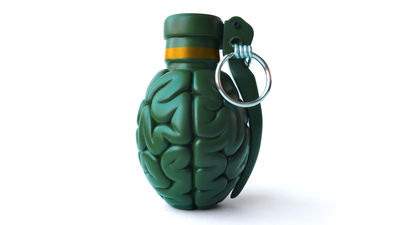Succeeded in producing autistic mice by gene mutation

ByMikefranklin
America'sMassachusetts Institute of TechnologyIt seems that the researchers of Suzuki succeeded in producing autistic mice.
Autism is a type of developmental disorder that is difficult to communicate with society and other people, and it is said to be congenital brain dysfunction, but there are still many unknown parts in its mechanism. This research is about brainSynapseIt is said that it succeeded in artificially producing mice with autism by mutating genes involved in the autism spectrum and it will contribute greatly to the understanding of the mechanism of autism and the study of therapeutic methods.
Details about autistic mice are given below.Re-creating autism, in mice
A researcher at the Massachusetts Institute of Technology succeeded in creating a mouse that has characteristics similar to autism's autism, such as compulsion, repetitive behavior, and avoidance of social interaction, by mutating a single gene Did.
The gene mutated this time is also involved in autism in humans and it seems that it interferes with communication between brain cells and is creating autistic behavior. Professor Guoping Feng, the general manager of the announcement reported in the online version of Nature, is a member of the McGovern Brain Research Institute at MIT who is conducting research on the brain and cognitive science, It is said that there is a possibility of giving a new path to development.
In the United States, one out of every 110 childrenAutism spectrumThese obstacles include obstacles in language as well as avoidance of social relations and repetitive behavior. Although no drugs effective for autism are currently developed, this new discovery may lead to the rescue of patients suffering from autism.
Professor Feng said, "We now have a firm model (autistic mouse) that clearly knows the cause of autistic behavior.We will cause autistic behavior from here We will be able to find neural circuits, which should lead to the discovery of new areas to treat. "
For researchers, it will be possible to test new drugs on autism against mice before use in human patients.
Professor Feng succeeded in creating autistic mice.

Previous studies have shown that more frequent mutations can be seen in hundreds of genes in autistic patients than in healthy individuals but in individual patients there is actually a mutation Because it is a small number of genes, it seems that it was difficult to find an effective treatment.
Professor Feng's attention in this research,"Shank 3"The gene.
Shank 3 is known as a gene related to autism, and the protein that Shank 3 produces exists in synapses that play a role in connecting brain cell communication. Professor Feng seems to have been conducting research on Shank 3 several years ago, considering that proteins constituting the synapse are involved in autism and obsessive compulsive disorder, etc.
The reason why Professor Feng chose Shank 3 as a target is that the protein constituted by Shank 3 is in the brain"Striatum"It was because many gathered in the part called.
The striatum is the part involved in "decision making" and "emotional aspects of behavior" in the brain. The striatal abnormality is considered to be related to brain disorders such as autism, and Professor Feng hypothesizes that incomplete synapses caused by gene mutation may be the cause of disability I made it.
Mice born in this study were mutated in Shank 3. Professor Feng says, "They (mice who mutated Shank 3) are not interested in dialogue with other mice".
Professor Guy Rouleau who taught at the medical department of the University of Montreal appreciated that autistic mice gave researchers opportunities to know more about autism and the opportunity to develop new treatments, In the field of disability physiology, it will be a good model for a deeper quest, "he says from an objective standpoint.
In actual autistic patients, the proportion of patients with Shank 3 mutations is negligible, but Professor Feng is also caused by protein disruption in other synapses than in Shank 3 in many other cases He says. Professor Feng is currently studying whether mutations in other genes are involved in autism in human patients.
Depending on the results of this study, each patient will be able to treat autism by restoring synaptic function regardless of which gene mutation causes autism, Professor Feng says.
In addition, Professor Feng mentioned about the research published in this time magazine, a part of the research was conducted at Duke University where he previously belonged, including Duke University including the lead authors Joao Peca and Professor Christopher Lascola He also said that colleagues at the company are also participating as authors of this research.
Related Posts:
in Creature, Posted by darkhorse_log







